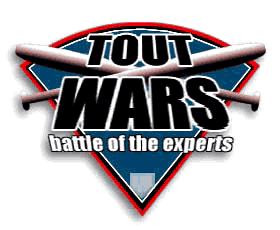So, we learned that the draft day hitters fell short of their draft day prices by 12 percent last year. How about the pitchers?
The pitchers that cost $20 or more, the blue chip starters and a few relievers, had an average price of $25 and ended up earning an average of $21. That’s a loss of 15 percent. Of course, it wasn’t evenly distributed, and Clayton Kershaw’s rather massive profits last season offset a lot of the others’ pain.
A sampling of pitchers taken in the mid-teens is even more problematic. Only five of them earn a profit, and only Matt Harvey and Anibel Sanchez earn big profits.
As a group they lose 58 percent of their draft day value. Not good at all.
So, one thinks, the cheaper pitchers must do better, right? A cohort of those who cost from $8 to $10 say nah. Though five of them had good profits, this group did worst of all.
They collectively lost 70 percent of their draft day cost. That’s mind blowing, but of course there is a good reason for it and it helps demonstrate why we get a discount on pitchers, allocating only 31 percent of our money on them on draft day, even though they earn the same number of points as hitters when all is said and done.
Here goes: The best pitchers, let’s say those who cost $20 and up, cost $468 last year and earned $398, a decline of 15 percent. These are the guys considered healthy and reliable, and all things considered, they are.
The pitchers who cost between $10 and $19, cost $888 last year and earned just $342, losing 61 percent of their value. There were success stories in this group of 60 pitchers with modest expectations and possible potential, but all the failure undercuts their value as a group.
How about the cheapies? Among the hitters the $9 and less group actually earned a profit as a group, but not the pitchers. In fact, as a group these pitchers who cost between $1 and $9, cost $506 and lost $176!
Of course, most fantasy leagues don’t force you to keep underperforming pitchers, and these cheap guys are the shots in the dark that you hope hit the target, knowing full well that you can get rid of them without regret if they don’t. Though finding a replacement isn’t always easy, there are always options (including going with a middle reliever).
The real issue here, the one that gets to the heart of the 69/31 budget split between hitters and pitchers, is the price we pay for stats on draft day. Pitchers are unreliable, but that isn’t why we pay them less. We pay them less because there are always alternatives. Last year, on draft day, we paid $1457 for our pitchers, and they earned $564. Ugh!
In fact we drafted $893 of negative value on draft day, and left $413 of positive value pitchers undrafted. Those guys represented options that we knew would be available, which allowed us to discount by a decent amount all pitchers, but especially the inexpensive hurlers. Not enough to avoid a loss on draft day, but we have to pay enough to win the competition for the gems who do emerge.
That’s the fine balance we try to maintain on draft day.






You must be logged in to post a comment.